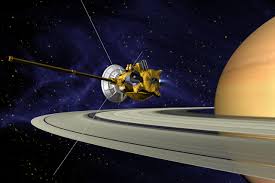NASA’s Cassini spacecraft completed its final close of Saturn’s moon Titan and has now started its final set of 22 orbits before jumping into Saturn on September 15, 2017 and completed its 20-year long journey.
Key facts:
- Cassini has dived successfully through the space between Saturn and its rings.
- It will perform another 21 dives through the same gap and will send more detailed information about Saturn and its rings.
- The spacecraft will provide the radar team with the final set of new images of the

- Cassini spacecraft was named after the 17th-century astronomer Giovanni Cassini.
- It was the fourth space probe to visit Saturn and the first to enter its orbit.
- It was launched into space in October 1997.
- It is a joint program of NASA, European Space Agency (ESA) and Italian space agency, Agenzia Spaziale Italiana (ASI).
- Cassini and Huygens have revealed the existence of earth-like geographic features, great lakes of liquid nitrogen gas on Titan’s surface.
- Huygens was developed by the European Space Research and Technology Centre.
- In April, NASA announced that the spacecraft has found evidence that the underground ocean could sustain some form of life.
- Cassini has generated a rich volume of data that will fuel scientific study for decades to come.
About Saturn
Saturn is the sixth planet from the Sun and the second-largest in the Solar System, after Jupiter.
- It is a gas giant with an average radius about nine times that of Earth.
- Saturn has a prominent ring system that consists of nine continuous main rings and three discontinuous arcs.
- Radius: 58,232 km.
- Moons: Titan, Enceladus, Mimas, Iapetus, Dione, Rhea, Tethys, etc.
AffairsCloud Recommends Oliveboard Mock Test
AffairsCloud Ebook - Support Us to Grow
Govt Jobs by Category
Bank Jobs Notification